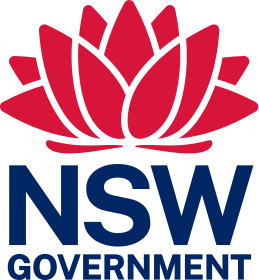Mobile cranes
An SPV that exceeds one or more of the general mass and dimension limits set out in the Heavy Vehicle (Mass, Dimension and Loading) National Regulation is considered a Class 1 restricted access heavy vehicle.
For further information on SPVs please see the National Heavy Vehicle Regulator (NHVR) website.
Road Access
| Notice |
|
| Operator's Guide |
|
| Network | The NSW Special Purpose Vehicle Network maps on the NHVR National Network Map. The NSW SPV access networks are:
A crane that does not comply with the requirements for any of the networks requires an individual assessment to determine suitable access networks or individual routes (known as SPV Level 5). |
| Permit | Operators seeking access to roads that are not on the approved network, or with a crane with dimensions or mass over the limits stated in a notice must obtain a permit for travel. Information on applying for a permit is available on the National Heavy Vehicle Regulator website. |
| Schemes | Schemes with mobile crane access include:
|
| State-wide curfews | Travel curfews are imposed during public holiday periods for special purpose vehicles. |
Telematics
All high-risk mobile cranes must be enrolled in either Telematics Monitoring Application (TMA) or Intelligence Access Program (IAP) as a condition of access to approved roads in NSW. This includes mobile cranes registered in NSW, as well as those registered in other states or territories who use NSW roads.
High risk mobile cranes are defined as all cranes:
- Wider than 2.5 metres
- 2.5 metres wide or less that exceed the mass limits outlined in the National Class 1 Special Purpose Vehicle Notice
- With a forward projection exceeding 5.5 metres.
Note: When travelling under the National Class 1 Special Purpose Vehicle Notice, two axle pick and carry cranes that are 2.5 metres wide or less with axle masses above 10 tonnes, but which do not exceed 12 tonnes do not currently require telematics enrolment in NSW.
To enrol in:
- IAP, go to the NHVR IAP webpage.
- TMA, apply via an approved application service provider. A list of service providers is available on the Transport Certification Australia (TCA) website.
Telematics Monitoring Application (TMA)
High risk mobile cranes, including articulated steering cranes, have the option of enrolling in TMA with a requirement of a self-declaration for cranes that intend to change configuration.
Under the TMA self-declaration feature, operators will be required to declare vehicle configuration whenever there is a change in vehicle mass or configuration using the TCA certified user interface. If your crane does not change mass or configuration self-declaration is not required.
For more information about TMA on cranes in NSW please refer to the:
- Telematics on cranes factsheet (PDF, 98.71 KB); and
- Special Purpose Vehicles – Telematics Monitoring Application.
Alternate configurations
Alternate configurations provide more productive and flexible access to travel on approved roads in NSW through enabling:
- All terrain cranes up to 5-axles to operate as standalone crane configurations on more than one SPV access network.
- A crane and dolly combination to operate both as a standalone crane (boom over crane) and a crane and dolly combination (boom reversed) on SPV access networks.
Cranes must be enrolled in IAP or TMA and operators must self-declare vehicle configurations prior to travel. Further information, including access networks for alternate configurations, is available in the:
- New South Wales Class 1 4-axle and 5-axle All Terrain Mobile Crane Operator’s Guide
- New South Wales Class 1 All Terrain Mobile Crane and Dolly Combination Operator’s Guide
Contact us
For more information, please contact us on: freight@transport.nsw.gov.au
